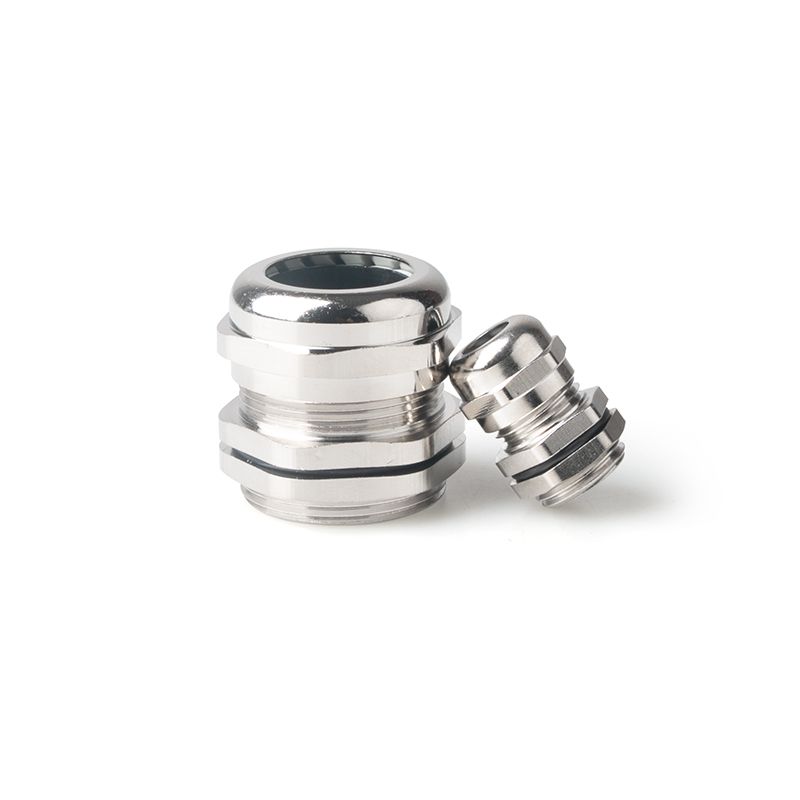What Are Key Functions of Brass Cable Glands?
Brass cable glands are essential components in modern electrical systems, ensuring both safety and efficiency across diverse industrial applications. These devices are precision-engineered to provide secure and durable connections for electrical cables, while also safeguarding against environmental hazards. In this article, we explore the extensive uses, benefits, and technical specifications of brass cable glands, highlighting their pivotal role in contemporary electrical installations.
Understanding Brass Cable Glands
Brass cable glands are mechanical devices designed to terminate the end of an electrical cable and securely attach it to an enclosure, equipment, or junction box. They provide both a mechanical grip and strain relief, preventing damage to cables due to pulling, twisting, or bending. Brass, an alloy of copper and zinc, offers exceptional strength, corrosion resistance, and electrical conductivity, making it an ideal material for cable glands in demanding industrial environments.
These glands are widely employed in industries such as manufacturing, oil and gas, marine, telecommunications, and construction, where reliability and long-term durability are crucial.
Key Functions of Brass Cable Glands
1. Mechanical Cable Retention and Strain Relief
One of the primary functions of brass cable glands is to provide mechanical retention for electrical cables. By clamping around the cable, the gland prevents slippage and reduces the risk of strain on internal conductors. This feature is critical in environments where cables are subject to frequent movement, vibration, or mechanical stress, ensuring consistent electrical performance and preventing accidental disconnections.
2. Environmental Sealing and Protection
Brass cable glands are designed to provide environmental protection for electrical connections. They often include O-rings, washers, or sealing inserts that create a watertight or dust-tight seal, classified under IP (Ingress Protection) ratings such as IP65, IP66, or IP68. This sealing capability protects cables from moisture, dust, chemicals, and temperature fluctuations, making brass cable glands ideal for outdoor installations and harsh industrial environments.
3. Electrical Grounding and Bonding
Brass has inherent electrical conductivity, which allows brass cable glands to act as a grounding or bonding point for metallic cable shields. This ensures that electromagnetic interference (EMI) is minimized and electrical safety standards are maintained. In applications such as data centers, industrial automation, and high-voltage equipment, proper grounding through brass cable glands is indispensable for system reliability.
4. Adaptability for Different Cable Types
Brass cable glands are highly versatile, suitable for a wide range of cable types including armored cables, flexible cables, and multi-core cables. Their design can accommodate varying diameters and insulation materials, providing a tight and secure fit regardless of cable specifications. This adaptability makes them a preferred choice in custom installations and complex electrical networks
.
Industrial Applications of Brass Cable Glands
1. Manufacturing and Automation Industries
In manufacturing plants, machinery operates continuously under heavy loads, often producing significant vibration and mechanical stress. Brass cable glands provide secure connections to equipment such as conveyor systems, robotic arms, and control panels, preventing cable wear and ensuring uninterrupted production.
2. Oil and Gas Sector
The oil and gas industry demands highly durable components capable of withstanding corrosive chemicals, high pressure, and extreme temperatures. Brass cable glands are frequently used in offshore platforms, refineries, and petrochemical plants to ensure cable integrity and prevent hazardous electrical failures.
3. Marine and Shipbuilding Applications
Saltwater environments accelerate corrosion and compromise electrical systems if improperly protected. Brass cable glands, with their corrosion-resistant properties, are ideal for ships, docks, and marine instrumentation, providing secure, long-lasting connections in challenging maritime conditions.
4. Renewable Energy Installations
Brass cable glands are increasingly used in solar and wind energy projects, where outdoor exposure demands robust protection against UV rays, moisture, and temperature variations. They ensure safe and efficient power transmission from panels or turbines to control systems, supporting sustainable energy operations.
5. Telecommunications and Data Networks
In the telecommunications sector, maintaining the integrity of fiber optic and copper cables is critical for uninterrupted data transmission. Brass cable glands offer precise strain relief and environmental sealing, preventing cable damage and ensuring consistent network performance.
Technical Advantages of Brass Cable Glands
Corrosion Resistance: Brass resists oxidation and environmental degradation, extending the life of electrical connections.
Durability: High mechanical strength prevents deformation under pressure or mechanical stress.
Temperature Tolerance: Suitable for extreme temperatures ranging from -40C to 120C, depending on the specific design.
Customizability: Available in various thread sizes (metric, PG, NPT, and BSP), diameters, and sealing options to match specific application needs.
Safety Compliance: Meets international standards such as IEC, ATEX, and UL, ensuring safe operation in hazardous environments.
Installation Best Practices
Proper installation of brass cable glands is crucial to achieve maximum performance and longevity. Key considerations include:
Correct Sizing: Choose a gland that matches the cable diameter for optimal clamping and sealing.
Proper Torque: Avoid over-tightening, which may damage the cable or gland; follow manufacturer torque specifications.
Sealing Integrity: Ensure O-rings and washers are correctly seated to maintain IP-rated protection.
Periodic Inspection: Regularly check for corrosion, wear, or loosening to prevent electrical hazards.
Conclusion
Brass cable glands are indispensable in modern electrical installations, offering mechanical protection, environmental sealing, and grounding capabilities across a broad spectrum of industries. Their durability, versatility, and compliance with stringent safety standards make them a preferred choice for engineers and electricians seeking reliable cable management solutions. Whether in industrial manufacturing, oil and gas, marine applications, or renewable energy systems, brass cable glands ensure safe, efficient, and long-lasting electrical connections.
For businesses and professionals aiming to maintain optimal system reliability and compliance, investing in high-quality brass cable glands is not just recommended—it is essential.
For more information please contact YDT


评论
发表评论